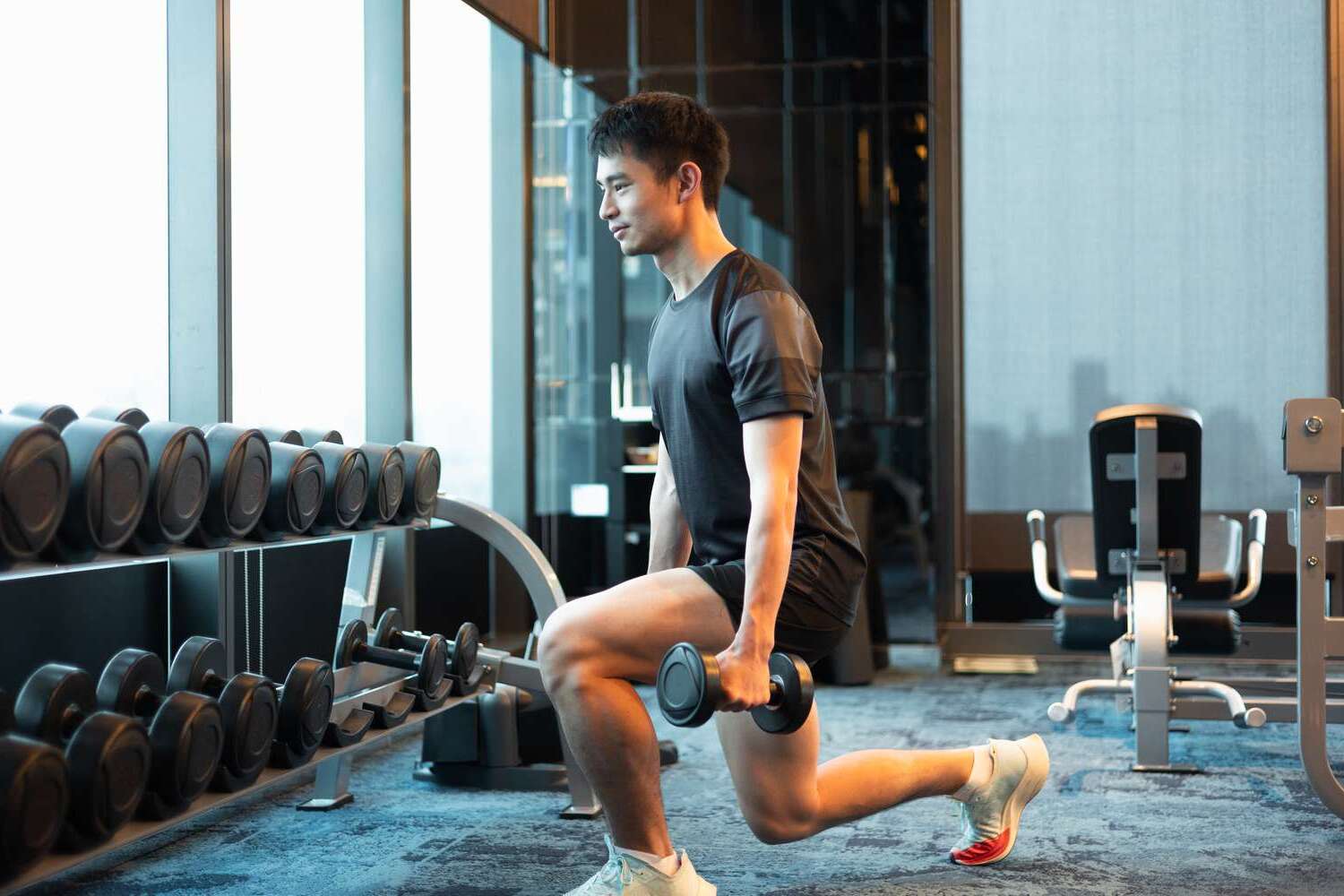
Ever wondered why gyms are the go-to spots for folks aiming to get in shape or stay fit? Well, gyms pack more than just weights and treadmills; they're brimming with fascinating stories and facts that might just give you that extra push to grab your sneakers. From ancient history to modern-day fitness trends, gyms have evolved in ways that are as intriguing as they are beneficial to our health. Did you know, for instance, that the first recorded gym dates back over 3,000 years? Or that working out can boost your brainpower along with your muscles? Let's dive into the 32 best facts about gyms that will not only educate but also motivate you to hit the gym with a newfound appreciation for this fitness sanctuary.
Key Takeaways:
- Gyms are popular due to diverse workout options, social aspects, and health benefits. They're evolving with technology and personalized fitness solutions, shaping the future of holistic health and well-being.
- Gyms offer unique concepts worldwide, emphasizing nutrition, overcoming intimidation, and promoting rest and recovery. They cater to diverse needs and aim to create welcoming environments for all.
What Makes Gyms So Popular?
Gyms have become a staple in modern society for a variety of reasons. Health awareness is on the rise, with more individuals recognizing the importance of regular physical activity. Gyms offer a convenient and diverse array of equipment and classes, catering to a wide range of fitness levels and interests. This accessibility makes it easier for people to incorporate exercise into their busy schedules.
-
Global gym memberships have skyrocketed in the past decade, reflecting an increasing commitment to fitness and health.
-
Diverse workout options available at gyms, from weightlifting to yoga, ensure that there's something for everyone, making exercise less of a chore and more of an enjoyable activity.
The Historical Evolution of Gyms
The concept of the gymnasium dates back to ancient Greece, where they were not only centers for physical training but also for intellectual and social gatherings. This historical context highlights the long-standing connection between physical fitness and overall well-being.
-
The word "gymnasium" comes from the Greek "gymnos," meaning "naked." This is because ancient Greeks exercised without clothing.
-
In the 19th century, the German Turnverein and the Swedish system of gymnastics popularized the gymnasium in Europe, laying the groundwork for the modern gym.
The Impact of Technology on Gyms
Technology has revolutionized the way we exercise, making workouts more efficient, enjoyable, and personalized. From wearable devices that track our progress to apps that provide virtual coaching, technology enhances our gym experience.
-
Smart equipment can now adapt to the user's fitness level, providing a customized workout that can evolve as the user's fitness improves.
-
Virtual reality (VR) fitness classes are gaining popularity, offering an immersive experience that makes exercising more engaging and less monotonous.
Health Benefits of Regular Gym Attendance
Regular visits to the gym can have profound health benefits, both physical and mental. Engaging in physical activity releases endorphins, which have mood-boosting properties.
-
Regular exercise has been shown to reduce the risk of chronic diseases such as heart disease, diabetes, and certain cancers.
-
Mental health benefits include reduced symptoms of depression and anxiety, as well as improved self-esteem and cognitive function.
The Social Aspect of Gyms
Gyms are not just places to work out; they're also social hubs where people can meet others with similar health and fitness goals. This community aspect can be incredibly motivating.
-
Many gyms offer group classes, which foster a sense of community and accountability among participants.
-
Fitness challenges and events can create camaraderie and friendly competition, making the pursuit of health goals more enjoyable.
The Economic Side of Gyms
The fitness industry is a significant economic player, with gyms contributing substantially to local and national economies through membership fees, employment, and related health products.
-
The global fitness and health club industry generates over $80 billion annually.
-
Employment opportunities in gyms range from personal trainers and class instructors to management and customer service roles.
Environmental Considerations in Modern Gyms
As awareness of environmental issues grows, many gyms are taking steps to become more sustainable. This includes using eco-friendly materials and reducing energy consumption.
-
Some gyms now use biodegradable cleaning products and recycled materials in their facilities.
-
Energy-efficient lighting and water-saving fixtures are becoming more common in gym designs.
The Future of Gyms
Looking ahead, gyms will likely continue to evolve, incorporating more advanced technology and personalized fitness solutions. The focus on holistic health, including mental and emotional well-being, will also shape the future of gym offerings.
-
Wearable technology will become even more integrated into gym equipment, providing users with real-time feedback on their performance.
-
Personalized nutrition plans, based on DNA testing and activity tracking, may become a standard part of gym memberships.
-
The concept of virtual gyms, where users can access workouts and classes from the comfort of their home, is expected to grow, offering a flexible alternative to traditional gym attendance.
Unique Gym Concepts Around the World
Globally, gyms are adopting unique concepts to stand out and cater to specific niches. From luxury fitness centers to gyms specializing in specific types of workouts, the variety is vast.
-
In Tokyo, a gym offers workouts alongside virtual reality gaming, combining fitness with entertainment.
-
London hosts a floating gym on the River Thames, providing a unique setting for exercise with a view.
-
Outdoor gyms in countries like Brazil utilize public spaces, making fitness accessible to all, regardless of income.
-
In New York, a gym focuses exclusively on mindfulness and meditation, highlighting the trend towards holistic health.
The Role of Nutrition in Gym Success
Nutrition plays a crucial role in maximizing the benefits of gym workouts. Many gyms now offer nutritional counseling and diet plans as part of their services.
-
Protein intake is emphasized for muscle repair and growth, with many gyms selling protein shakes and supplements.
-
Hydration is key to optimal performance and recovery, with water stations and electrolyte drinks widely available in fitness centers.
-
Some gyms have partnered with dietitians to offer personalized meal plans, ensuring that members receive comprehensive health guidance.
Overcoming Gym Intimidation
For many, the thought of joining a gym can be daunting. However, gyms are increasingly focusing on creating welcoming environments for beginners.
-
Introductory classes and tours can help new members become familiar with gym equipment and etiquette.
-
Many gyms offer one-on-one coaching sessions to help newcomers set realistic goals and develop a workout plan.
-
The rise of women-only gyms addresses concerns about comfort and safety, providing a supportive space for female fitness enthusiasts.
The Importance of Rest and Recovery
While regular gym attendance is beneficial, rest and recovery are equally important for achieving fitness goals and preventing injuries.
-
Active recovery days, involving light exercise like walking or yoga, can help muscles heal and prevent burnout.
-
Many gyms now feature recovery zones with foam rollers, massage chairs, and even cryotherapy chambers to aid in muscle recovery.
-
Sleep quality is emphasized as a critical component of fitness success, with some gyms offering workshops on sleep hygiene.
-
Hydration and nutrition play key roles in recovery, with gyms providing guidance on how to replenish the body effectively after workouts.
-
Finally, mental rest is crucial. Gyms offering meditation and mindfulness classes help members manage stress and improve overall well-being.
A Final Sprint Through Gymnastics Trivia
We've cartwheeled through a world brimming with flips, twists, and leaps, landing squarely on a mat of knowledge. Gymnastics isn't just about physical prowess; it's a dance between discipline, history, and the relentless pursuit of perfection. From ancient Greek arenas to modern Olympic stages, this sport has vaulted beyond mere competition, becoming a testament to human potential. Remember, every gymnast's journey starts with a single tumble, and every fact we've shared is a step towards appreciating the intricate tapestry of this dynamic discipline. Whether you're a budding gymnast, a seasoned enthusiast, or simply a curious mind, these facts aren't just trivia—they're the building blocks of a deeper understanding and appreciation for one of humanity's oldest sports. So, keep flipping through the pages of history and innovation—you never know what you might discover next in the fascinating world of gymnastics.
Frequently Asked Questions
Was this page helpful?
Our commitment to delivering trustworthy and engaging content is at the heart of what we do. Each fact on our site is contributed by real users like you, bringing a wealth of diverse insights and information. To ensure the highest standards of accuracy and reliability, our dedicated editors meticulously review each submission. This process guarantees that the facts we share are not only fascinating but also credible. Trust in our commitment to quality and authenticity as you explore and learn with us.


